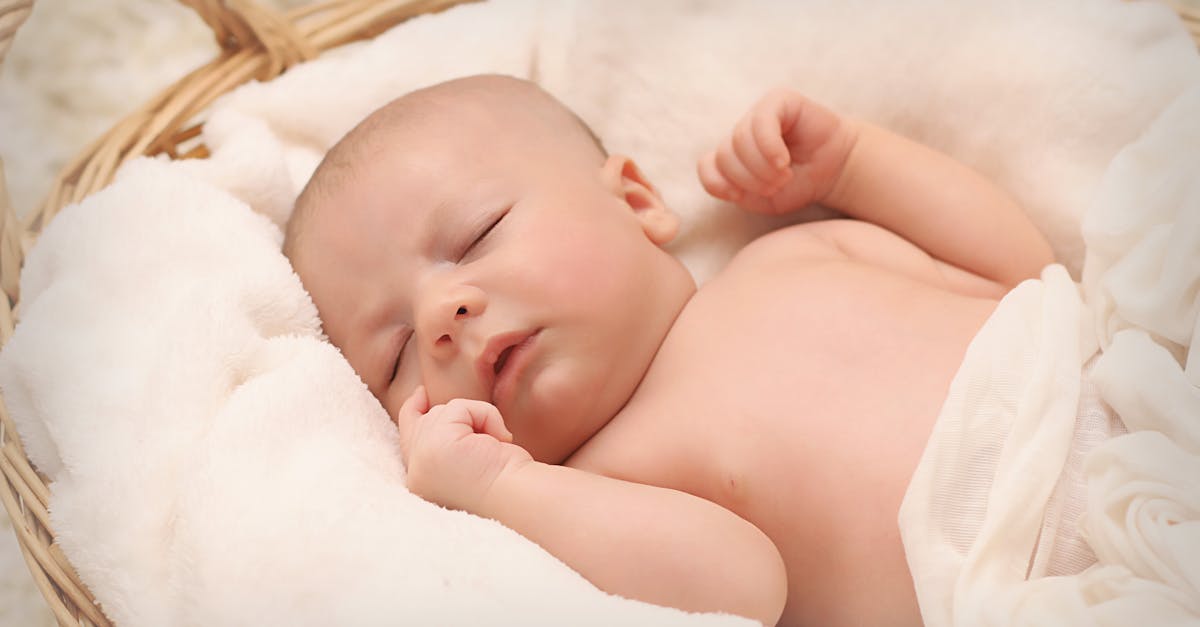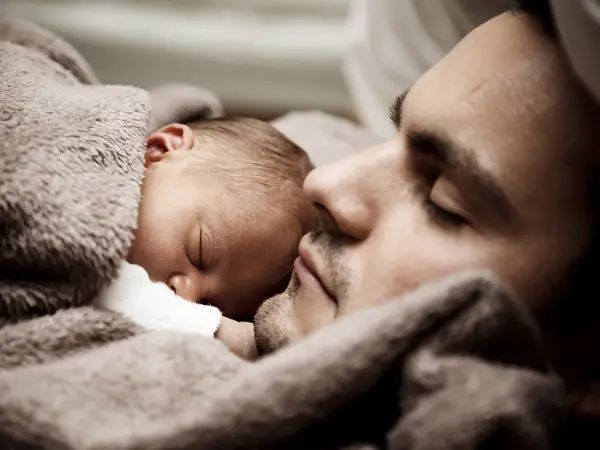Are there any benefits of co-sleeping with your baby? Yes, there are …

Co-sleeping has a positive impact on the entire family, not just on the baby. However, is co-sleeping suitable for everyone? No, it is not, and no one should feel pressured to do it. More importantly, is co-sleeping safe for your baby? The answer varies! It depends on the type of co-sleeping arrangement you choose.
Types of Co-Sleeping
There are several ways to co-sleep, each with its own benefits and safety considerations:
- Bed-sharing: Parents and baby sleep in the same bed. This is the riskiest form of co-sleeping due to suffocation and overheating hazards, especially for newborns.
- Snuggle nest: A portable sleep space designed for safer bed-sharing. Provides a protective barrier but does not eliminate all bed-sharing risks.
- Side sleeping arrangement: A bassinet or co-sleeper attached to the parents’ bed. Offers proximity while keeping the baby in a separate, safe sleep surface.
- Room-sharing with a bedside crib or bassinet: Baby sleeps in a crib or bassinet placed right next to the parents’ bed, within arm’s reach. Recommended by the AAP as the safest form of co-sleeping.
- Room-sharing with a separate sleep space: Baby sleeps in a crib or bassinet in the same room but at a slight distance from the parents’ bed. Provides the safety of independent sleep while allowing parents to monitor the baby.
👉 For a detailed explanation of each type, check out our Co-Sleeping with Baby Guide.
What are the Benefits of Co-Sleeping With the Baby?
The most significant benefit of co-sleeping with your baby is getting more rest while ensuring your baby feels safe and secure. Parents can immediately respond to their baby’s needs, and their presence has a calming effect, reducing fussiness and promoting better sleep.
However, co-sleeping also comes with potential drawbacks. If you’re weighing the pros and cons, we’ve broken them down for you in our Pros and Cons of Co-Sleeping With Baby article.
Benefits of Co-Sleeping With Your Baby
While co-sleeping offers overall benefits, its impact can vary depending on your family’s unique situation. Whether you’re breastfeeding, bottle-feeding, or simply looking for ways to maximize rest, co-sleeping can provide different advantages for both parents and baby.
Below, we explore how co-sleeping benefits breastfed and bottle-fed babies, as well as moms and dads, so you can see how it might work for your family.
1. Benefits of Co-Sleeping for Breastfed Babies:

Co-sleeping can be especially beneficial for breastfed babies, as it supports their feeding needs and promotes a strong parent-child bond. Here are some key advantages:
- Longer and more restful sleep
- Lower stress levels due to the comfort of a parent’s presence
- Increased milk supply – frequent night feedings stimulate milk production
- Better weight gain – more frequent feeding ensures babies get enough calories
- A greater sense of security
- Temperature regulation – mothers can detect if the baby is too hot or cold and adjust accordingly
- Enhanced communication – babies become more responsive to their caregivers
2. Benefits of Co-Sleeping for Bottle-Fed Babies:
While co-sleeping is often associated with breastfeeding, it can be just as beneficial for bottle-fed babies. Studies show that physical contact, such as cuddling, strengthens the bond between parents and babies, enhancing responsiveness to their infants’ needs.
Regardless of whether a baby is breastfed or bottle-fed, co-sleeping provides essential emotional and psychological benefits. The closeness helps foster a strong sense of security, promoting a deeper parent-child connection.

3. Co-Sleeping Benefits for Moms:
Co-sleeping can make nighttime parenting easier and more restful, regardless of how a baby is fed. It offers several advantages for all mothers:
- More restful nights: Keeping the baby close allows for quicker responses to nighttime needs, reducing stress and disruptions. Moms can settle their baby back to sleep faster, leading to more overall rest.
- Stronger bonding: Physical closeness fosters a deep emotional connection between mother and baby, strengthening their bond.
- Increased confidence and responsiveness: Being near the baby helps moms quickly recognize and respond to cues, building confidence in their caregiving.
- Lower stress levels: The presence of a parent provides comfort to the baby, reducing fussiness and promoting a more relaxed sleep environment for both.
Additional Benefits for Breastfeeding Mothers
For breastfeeding moms, co-sleeping offers even more advantages:
- Easier nighttime feeds: Babies can nurse without fully waking, allowing moms to stay relaxed and get more rest. Since there’s no need to get up and walk into another room, both mother and baby remain in a drowsy state, making it easier to fall back asleep quickly. Research shows that co-sleeping mothers tend to get more sleep overall.
- Increased milk supply: Proximity to the baby may encourage more frequent feedings, helping to maintain milk production.
- Biological synchronization: Studies suggest that co-sleeping can help regulate a baby’s breathing, temperature, and sleep patterns, leading to better rest for both.
- Enhanced bonding: Skin-to-skin contact and responsiveness during the night further strengthen the mother-baby connection.
- Reduced stress: Frequent nighttime breastfeeding boosts oxytocin levels, which promotes relaxation and emotional well-being.
4. Co-Sleeping Benefits for Dads:

Many fathers worry that co-sleeping will interfere with intimacy, but in reality, adjusting to parenthood naturally changes spontaneity regardless of where the baby sleeps. However, couples can still maintain their connection by finding creative solutions, such as putting the baby to sleep in another space before bringing them back later.
If both parents agree, co-sleeping can actually strengthen the father-baby bond. Room-sharing or bed-sharing allows dads to spend more time with their baby, engage in skin-to-skin contact, and be more involved in nighttime care. This is particularly valuable for fathers who spend most of the day away from home, as it provides an additional opportunity for bonding.
Final Thoughts
Co-sleeping can be a great option for many families, but it’s essential to choose the right type of co-sleeping that fits your lifestyle and safety preferences. If you’re still unsure, check out our Co-Sleeping With Baby: A Comprehensive Guide for a deeper dive into how to co-sleep safely and effectively.
Want to explore the different types of co-sleeping arrangements and learn which ones are safest? We break them all down in our detailed guide.
And if you have twins, here’s how to co-sleep with twins safely — including smart room setups and gear that works for two.
